We Latvians like to travel around our own country. We have so many beautiful places and tourist attractions to see, therefore a weekend roadtrip plan is always ready. One of them is castle ruins to visit in Latvia, because we have quite a few of them.
Castles that have not survived to the present day still serve as remarkable historical landmarks. Seeing the castle ruins and getting a sense of antiquity can be a good reason to go on an excursion with your family or friends.
There are also many beautiful castles in Latvia that have been beautifully preserved – even if they have been renovated. If you want to see some of Latvia’s most beautiful castles and manor houses, you can do so in our article Latvian castles and manors.
In this article, we’ve gathered together a variety of castle ruins. Both those that have survived very well and those of which very little remains.
Dobele Castle Ruins
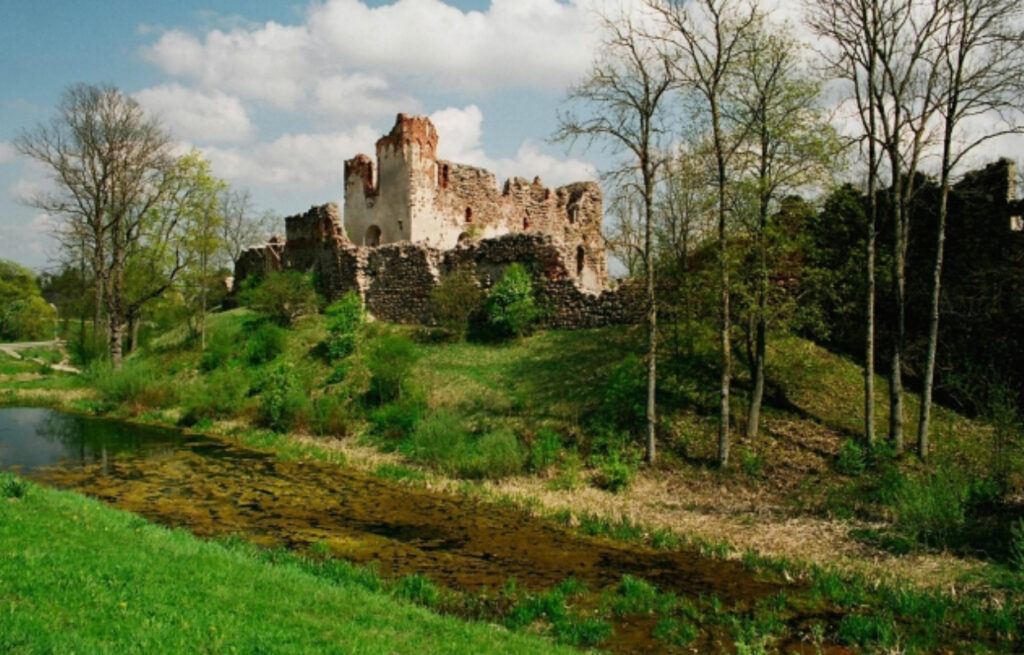
One of the first castle ruins that comes to mind is in Dobele. It is a stone castle of the Livonian Order, which is also the oldest building in Dobele. The castle was inhabited until 1730.
Dobele’s earliest inhabitants, the Semigallians, have been settled here since 1000 BC. A Zemgale wooden castle was built in the surroundings of the ancient town. From 1279 to 1289, Dobele Castle withstood six enemy sieges. Until the undefeated Zemgalians abandoned the castle in 1289, burning it down themselves.
Between 1335 and 1347, the Livonian Order built a stone castle in place of the Zemgale wooden castle, the ruins of which can still be seen today. Later, a church was added and a castle park was created. Now the castle ruins are a great tourist attraction and a source of pride for the people of Dobele.
The Dobele Castle Ruins can be visited free of charge.
Koknese Castle Ruins
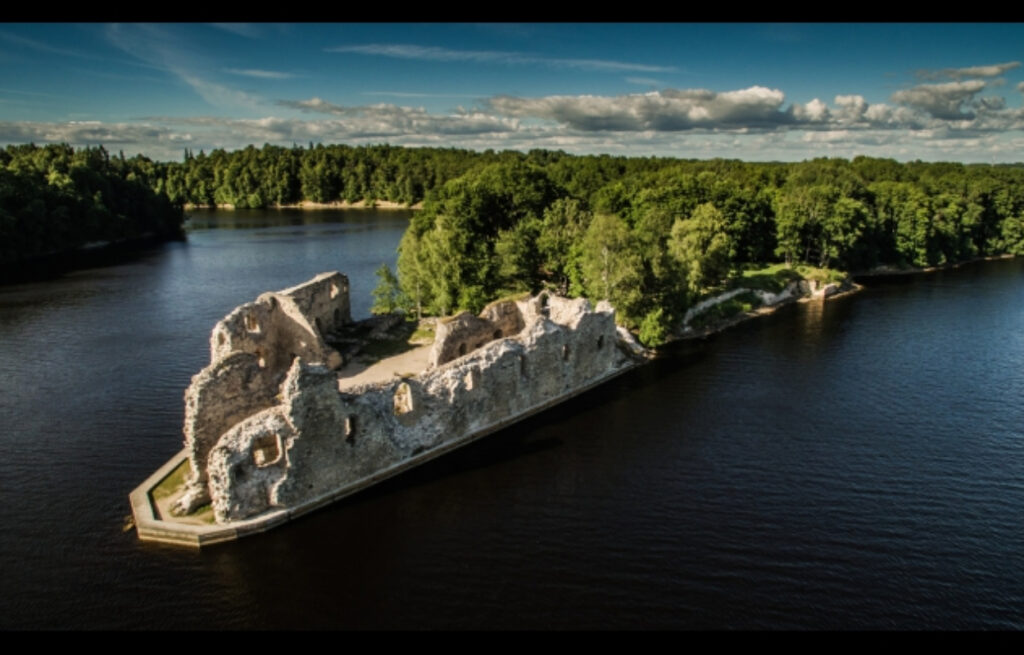
In ancient times, the ruins of Koknese Castle rose high on a hill at the mouth of the Perse River in the Daugava River. Today, after the construction of the hydroelectric power plant, they are washed by the waters of the Daugava River. The location of these castle ruins is particularly beautiful and can make for a fascinating family excursion.
Today, the ruins of Koknese Castle host a variety of events. Theatrical performances, concerts, money minting, wedding ceremonies in medieval and Old Latvian style, and the tradition of the Sam’s Wake Festival.
Koknese Castle Ruins is a great place to visit for the whole family. Here you can hang a coin in medieval style, try your hand at throwing medieval battle axes, learn a new game, game or dance, or sing a song. The ruins can be visited with a guide.
Ludza medieval castle ruins
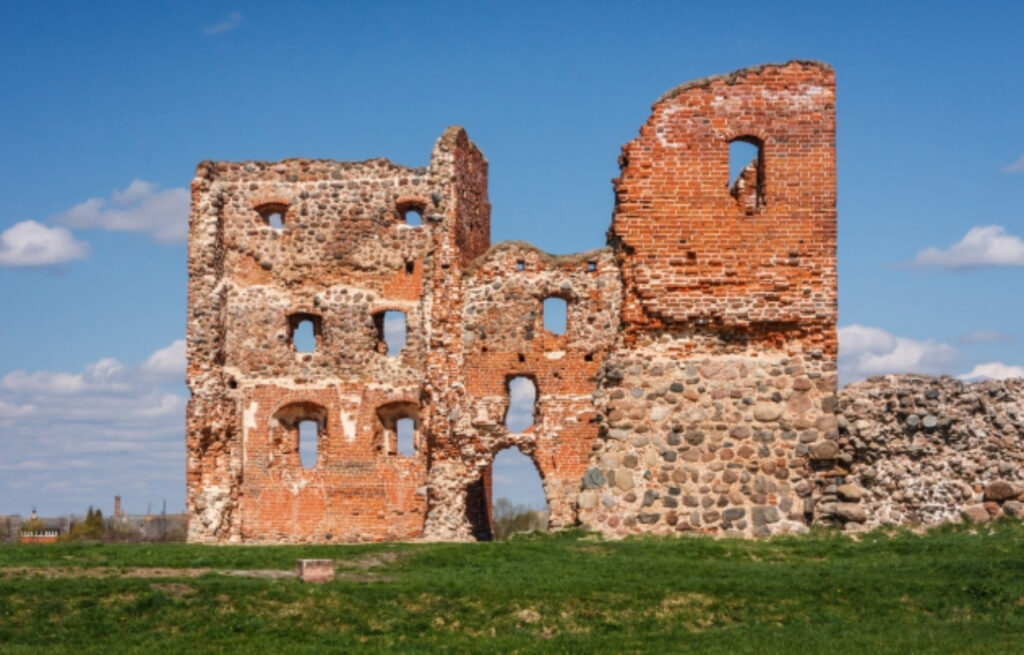
In 1399, the German Crusaders built a mighty three-storey stone castle with 6 towers, 3 gates and 2 fore castles on the castle hill. It was between the Great and Small Lake Ludza to protect the eastern border of the Livonian Order.
The castle was built of grey rubble and red brick, decorated with black glazed brick. Although not much remains of this impressive castle, it still stands stately and awaits all visitors.
The ruins of the castle are a favourite resting place for townspeople and visitors,. Offering the most beautiful panoramic view of the city. There are also several beautiful legends connected with the ancient castle, its king and the scolded princess. Those add a special interest to the history of the castle.
You can visit the medieval ruins of Ludza Castle free of charge.
Ludza medieval castle ruins location
Araisi Castle Ruins
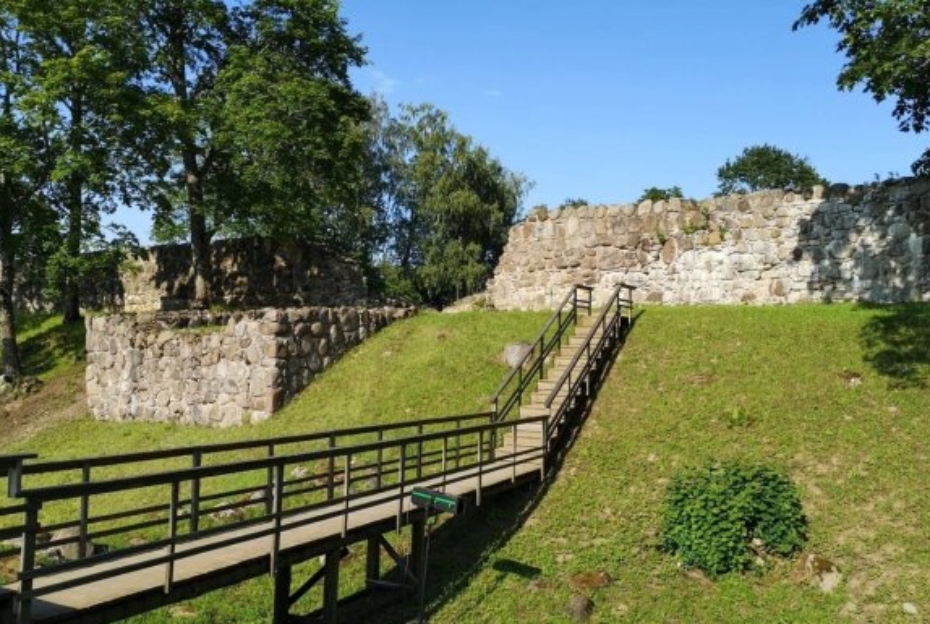
Araisi Lake Castle is undoubtedly one of the oldest and most vivid witnesses of centuries of Latvian history. Today it serves as a popular and visited place for tourists. The ancient dwelling in the middle of the lake has been reconstructed. It is the only reconstruction of a fortified dwelling of this kind in the 9th-10th centuries in North-Eastern Europe.
Lake Arais itself was built for defensive purposes on a small, overflowing island. The lake was built and inhabited by the largest Latvian tribe, the Latgalians.
The ruins of the castle are also visible here. The Āraiši stone castle was built during the Livonian Order and was inhabited between the 14th and 17th centuries. It is known that the castle with its forecourt was built as a neighbouring castle of the Livonian Order of Cesis. With military and economic significance.
Cesis Medieval Castle
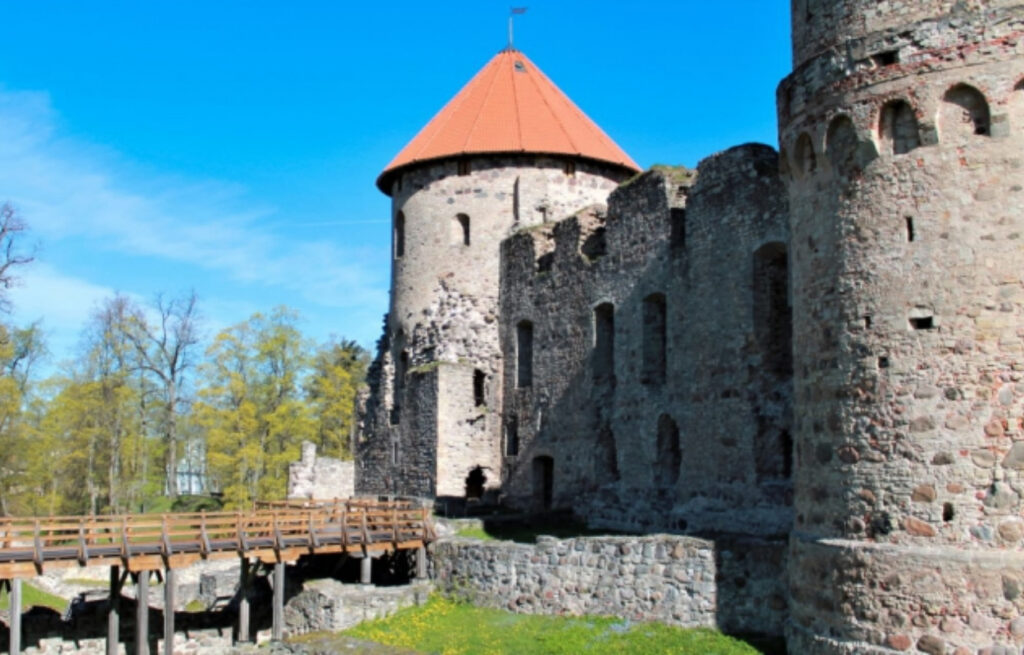
The origins of Cesis Castle go back 800 years. It is linked to the medieval castle of Cesis, around which an entire town was formed in the 13th century.
Today, you can explore the mighty ruins of Cesis Castle on your own or with a guide. In the medieval castle, you can climb the tower by candlelight. In the courtyard of the castle there is a kitchen garden. There a gardener welcomes visitors on weekends in summer to tell them about what is growing in the garden.
Next to the garden are medieval craft workshops,. There you can learn about the skills of a bone master, leather worker, blacksmith and other craftsmen.
On the north-west side of the castle is the Cesis Castle Park and an open-air bandstand. Concerts and other events are held here almost every weekend in summer.
Cesis Medieval Castle location
Dinaburg Castle ruins and a model of the castle
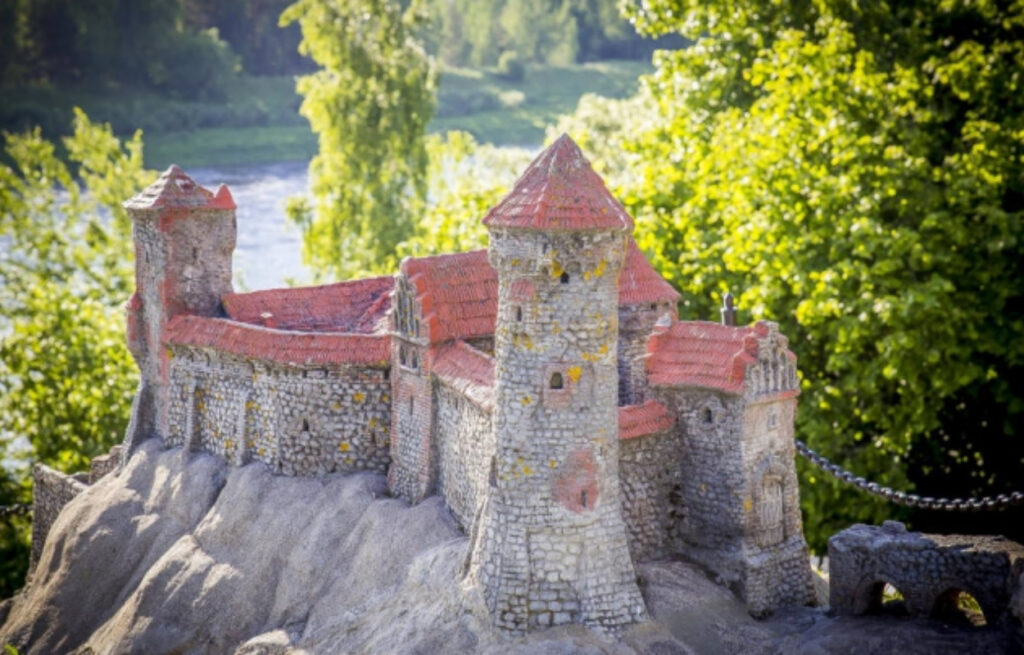
Naujene Castle Mound, which has been inhabited since the 8th century, is considered to be the founding place of Daugavpils. Although not much remains of the castle, a beautiful model has been created on its site.
Dinaburg Castle was built in 1275 on the site of Naujene Mound as a border fortress facing Lithuania by the Livonian Order’s Master, Ernest of Rassburg. Immediately after the castle was built, it was besieged by Lithuanian troops led by King Troiden.
Only a few ruins of the castle have been preserved. This is why a stone model of the castle has been created on the castle mound. And the Naujene Museum of Local History has a history exhibition.
A scale model of the castle, installed next to the ruins of the Order’s castle, helps to imagine what the castle looked like centuries ago. The castle mound offers one of the most beautiful views of the Daugava Circle Nature Park.
Dinaburg Castle ruins are free to visit. But guided tours cost around EUR 7 for groups of up to 35 people.
Dinaburg Castle ruins location
Valmiera Livonian Order Castle Ruins
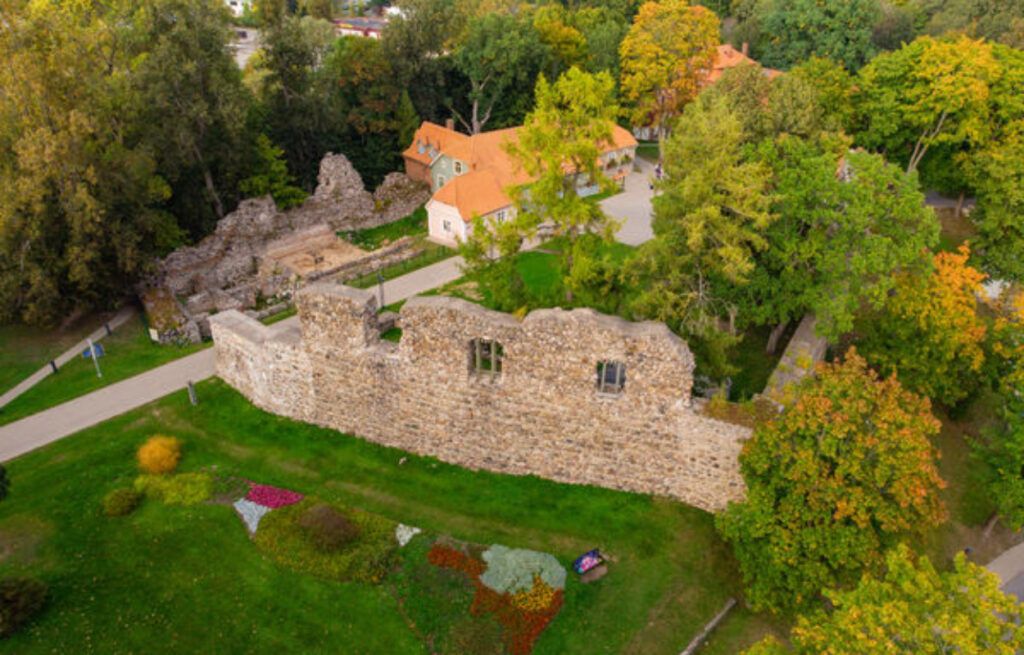
The ruins of this castle, in turn, preserve the memories of Valmiera’s ancient centre and expressively decorate the beautiful surrounding nature. The Livonian Order’s castle, with its strong front, mighty defensive walls, ramparts and moats, was the first fortification of the Livonian Order on the right bank of the river Gauja.
The castle was built in the 13th century on the site of an ancient Latgalian castle. The castle was strategically located. The steep bank of the Gauja and the deep ravine of the Ratsupite River protected it from invaders.
Today, the castle ruins also house the Valmiera Museum and its exhibition hall, as well as the Beverina craftsmen’s shop. Here you can buy a souvenir of your trip from a skilled craftsman. The open-air stage is used in summer for concerts, performances, celebrations of the museum’s anniversaries and ancient Latvian festivals.
The ruins of the Livonian Order of Valmiera can be visited free of charge.
Valmiera Livonian Order Castle Ruins location
Ropazi Castle Ruins
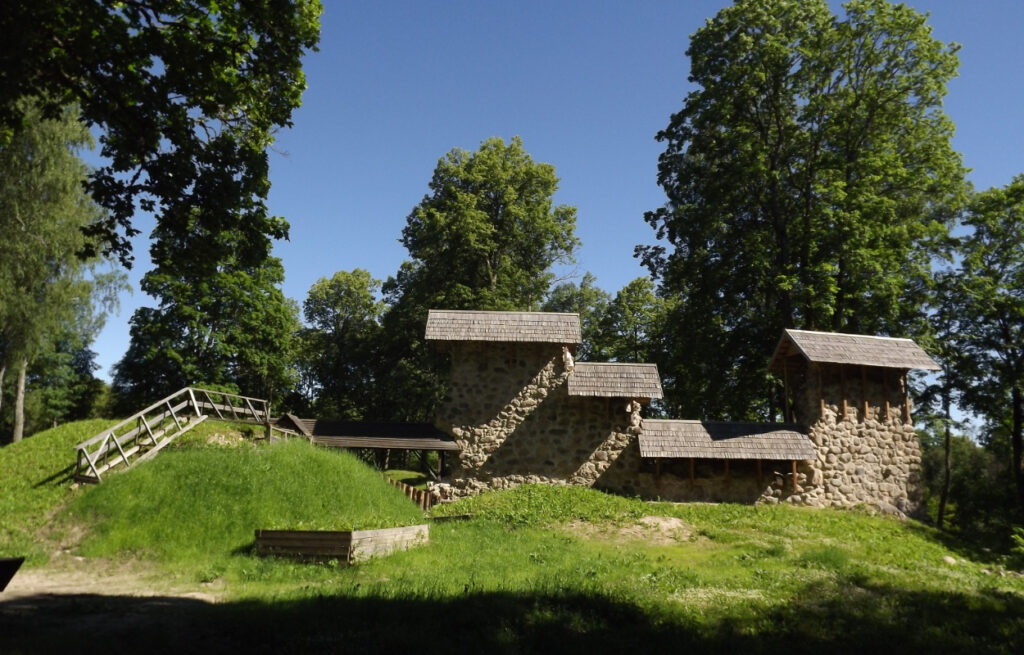
The ruins of Ropazi Castle or the German Order of the Brethren Castle were built in the 14th century. In 1559 the castle was burnt down by the Muscovite troops. Then, in the early 17th century, people lived in the castle for a while. But then it was abandoned, the castle walls were torn down and the stones were used to build new buildings.
The first evidence of a church in Ropazi can probably be traced back to the 14th century. But it was first mentioned in 17th-century records as St Michael’s Church, located opposite Ropazi Castle.
There was a cemetery around the church, which was discovered during archaeological excavations in 2008. Then 8 skeletal graves were unearthed near the present Macitajmuizas.
Today, it is possible to visit the ruins of Ropažai Castle any day. It is best to visit the site when it is warm – the surrounding nature is green and very beautiful.
You can visit Ropazu Castle Ruins for free.
Old Dole Castle Ruins
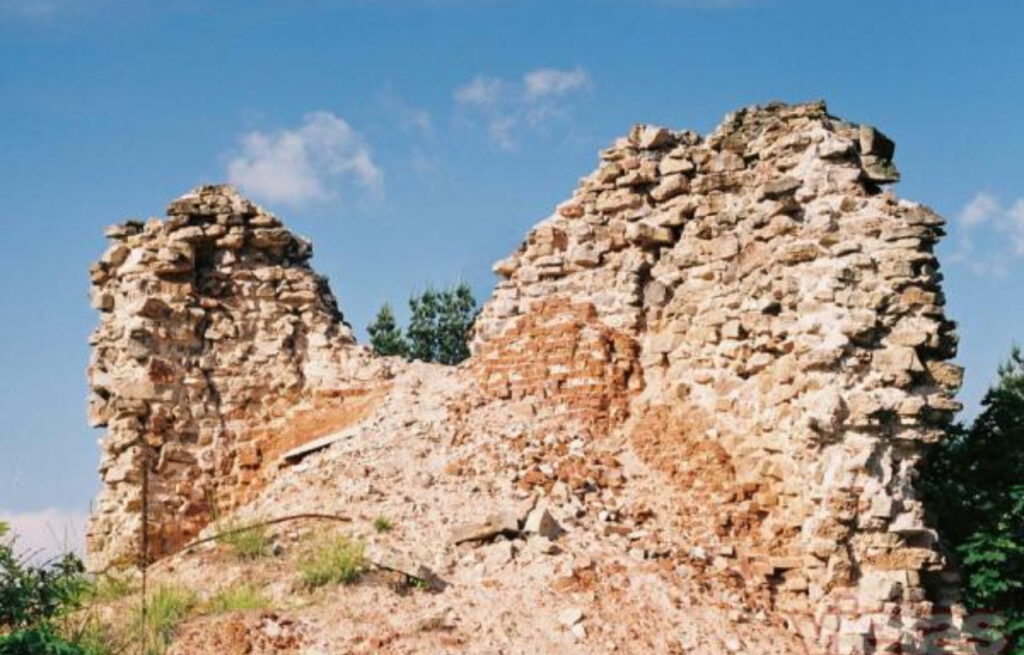
The castle was built in the early 13th century (before 1226) near the Rumbula rapids with a square stone fence. It is still one of the oldest examples of stonework in Latvia.
The castle was built of dolomite stones with red brick facing. According to history, the castle courtyard had a wooden guard room and outbuildings. As well as a stone dwelling with a hot-air stove and a square tower on the Daugava side.
The castle belonged to the family of the Archbishop of Riga, the vassal Dolen. In 1298 the castle was destroyed by the Livonian Order and its ruins later became a lime kiln. The ruins were excavated in the 1960s during archaeological excavations. The ruins overlook the Riga Hydroelectric Power Station, Dārziņi, the Cross Jump and the Rumba Creek.
The ruins of Old Dole or Vecdole Castle can be visited free of charge.
Old Dole Castle Ruins location
Staburags and medieval castle ruins
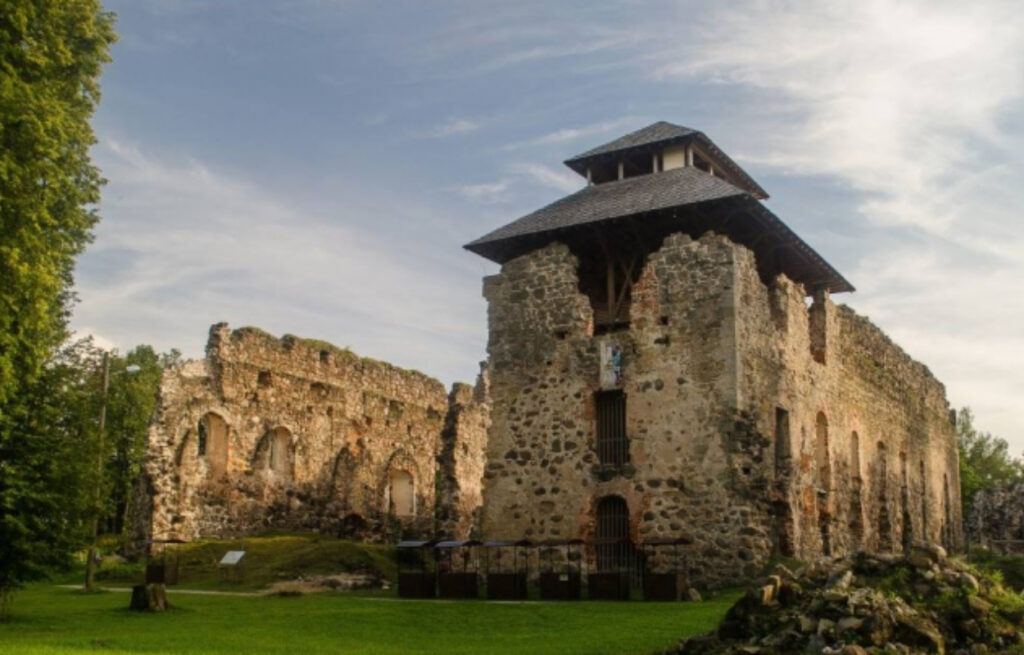
As far as we know today, the construction of the castle began in 1262. By order of the first Archbishop of Riga. It was one of the main residences of the Archbishop.
Already at the beginning of the 16th century, the castle was considerably enlarged. And a mighty medieval town grew up around the castle. By the end of the 17th century, all the towers had been demolished. Only the main blocks of the castle remained.
Today, visitors can climb the tower of the statue and see the former medieval town. The Staburag of Raun is a 17-metre-high, approximately 3.5-metre-high honeycomb rock formation. It formed over many centuries as moss calcified in the calcium carbonate-containing spring water. It is the only natural object of its kind in Latvia after the Daugava Staburags was flooded.
It is not advisable to climb on Staburags itself, as unnecessary weight damages it. To see it, use the specially created nature trail.
Visiting the ruins and Staburags is free, but climbing the tower requires a reservation in advance.
Staburags and medieval castle ruins location
Sigulda Castle Ruins
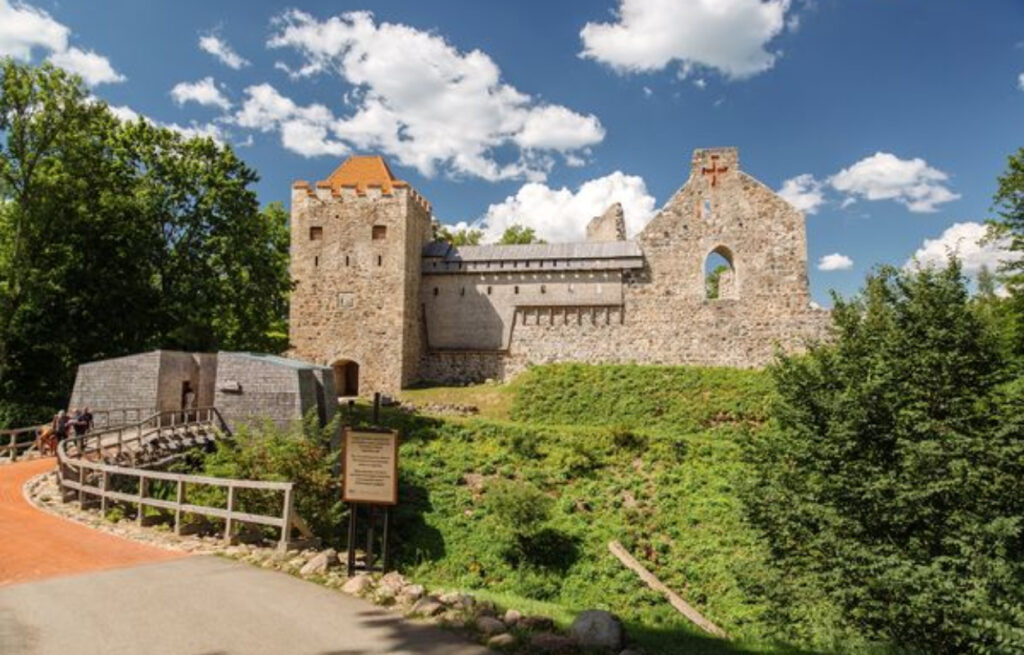
The Sword Brothers, who controlled the left bank of the Gauja River, built Sigulda Castle between 1204 and 1209. It was originally built as a fortress with a chapel. Later it was rebuilt as a convent. The castle had a large outer bailey and a bustling settlement of merchants and craftsmen.
The castle was damaged during the wars and eventually lost its military importance. In addition, the castle was destroyed during the Great Northern War in the early 18th century and was never rebuilt. The mighty rubble walls of the castle ruins preserve many historical events and stories. It is fascinating to imagine how the knights of the Livonian Order once honed their fighting skills here.
The ruins are home to an open-air stage where visitors can enjoy special moments every year at the Opera Music Festival, concerts by world-famous artists and other events. Today, you can walk the ancient walls, climb the towers and attend events on the open-air stage.
Lielvarde Medieval Castle
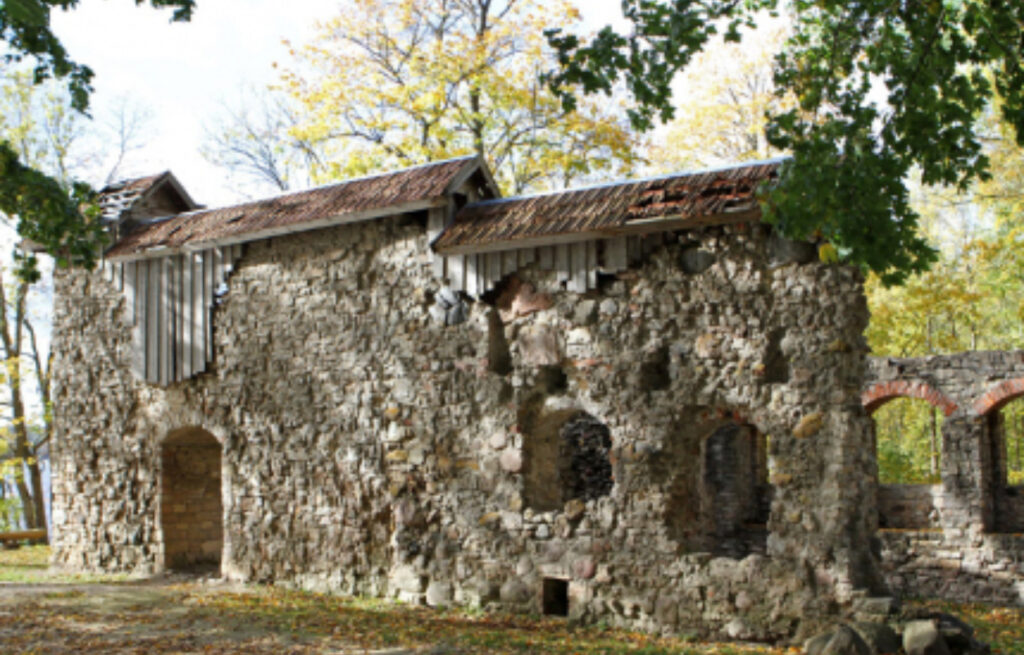
On the list of places to stay at night are the medieval ruins of Lielvarde Castle. The stone castle with a fortification rampart was built at the beginning of the 13th century on the site of an ancient Livonian wooden castle, under the instructions of the German Crusaders. It originally belonged to Bishop Albert of Riga.
The castle suffered several wars and was rebuilt again, but since 1613 it has been in ruins. It is located in Lielvarde Park at the mouth of the Rumbina River.
To celebrate the centenary of the epic “Lāčplēsis”, sixteen sculptures made of oak wood were placed there (the so-called Sculpture Garden). Behind the castle ruins, on the bank of the Daugava, is a steep cliff with an outcrop of dolomite rock. The reservoir is reached by a staircase. Lielvarde Manor Castle has unfortunately not been preserved.
You can visit Lielvarde Medieval Castle free of charge.
Lielvarde Medieval Castle location
Knights’ Castle Mound or Livonian Order Castle Ruins
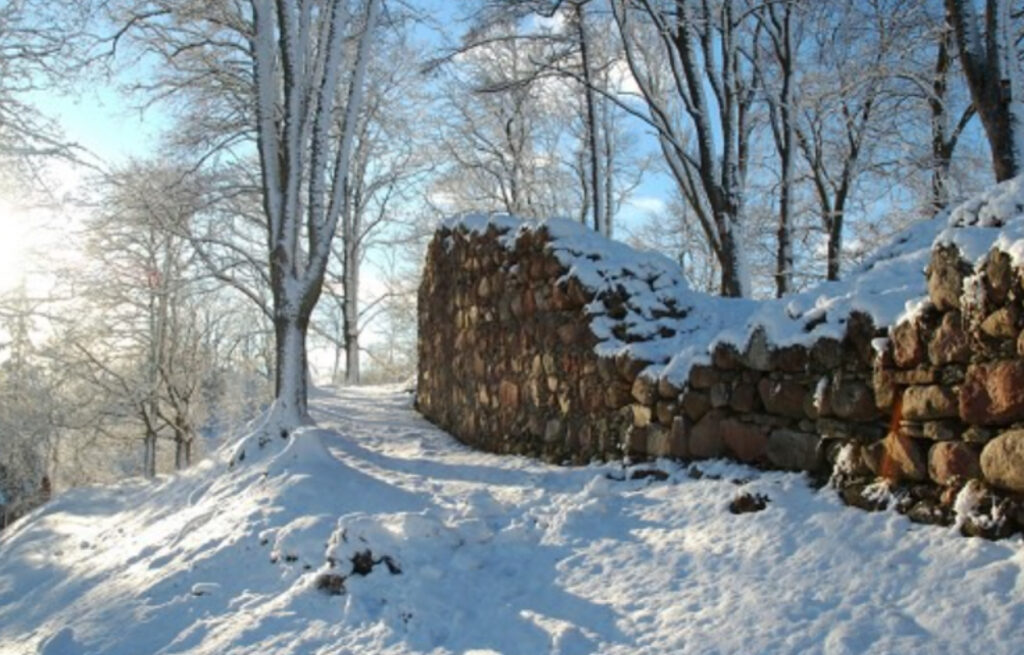
When the Crusader war route wound its way from Riga through Kurzeme, one of the fortified castles of the Order on the war route to Prussia was located here. The castle is situated on a promontory. And the location was chosen so that the Abava valley could be seen from afar.
The castle was intended as the residence of the Order’s judge in 1312. It is difficult to say what the castle of the Order actually looked like. There is no conclusive evidence of the castle before it had already been turned into ruins.
The hillfort was surrounded by a defensive wall. The terrain is more sloping on the northern side and the entrance to the castle was located there. Some remains of walls and foundations suggest that the judge’s residence was a rectangular building of 34.2 X 31.5 m with walls 1.8 m thick on foundations 2 m wide. There was also a chapel – the palace church; remains of a staircase were found.
The Knights’ Mound can be visited free of charge.
Livonian Order Castle Ruins location
Jumpravmuiza artificial castle ruins
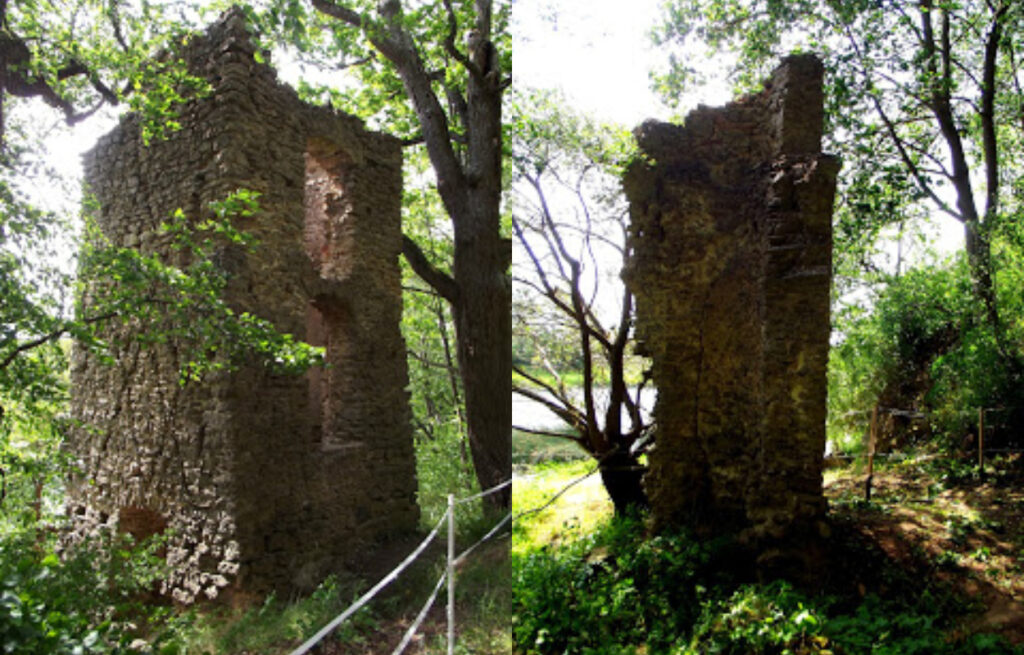
Latvia’s oldest artificial castle ruins (late 18th century) can be seen by the dolomite cliffs on the banks of the Lielupe River. There the fountain of love has its source.
The artificial castle ruins were built in the early 19th century by the owner of Jumprava Manor. Underneath, vaults and a deep cave were dug. Those(according to stories) led to the Bauska castle at the bottom of the Lielupe River. Across the Lielupe, you can see Ziedoni Park and the former Bornsminde Manor Castle.
Jumpravmuiza Park in Mezotne municipality of Bauska County is one of the most beautiful and romantic manor parks in Latvia. It is situated on the rocky banks of the Lielupe River. With a terrain unusual for Zemgale – dolomite rock outcrops, ravines, springs streams and even a small waterfall. Today, the park is a place where people of all ages can gain energy and wisdom from nature,. While bserving its peace and harmonious balance.
The ruins are free to visit.
Jumpravmuiza artificial castle ruins location
Krimulda Castle ruins
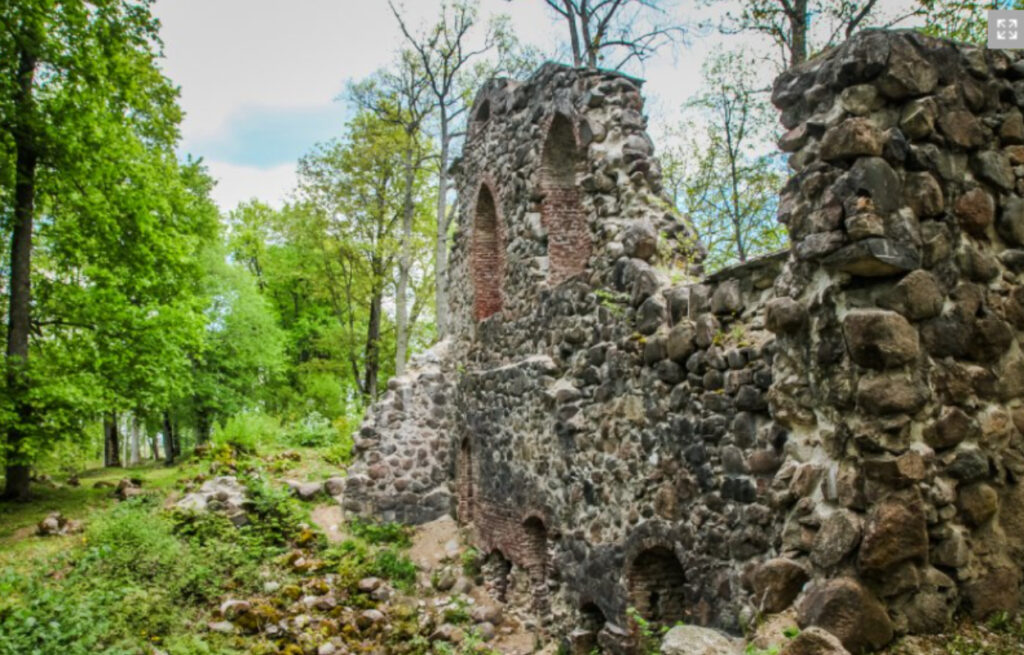
Krimulda Castle was built in the 13th century on the edge of the cliff on the right bank of the Gauja valley. Near the Vikmeste castle mound and village, inhabited by Livs.
The castle’s rectangular defensive wall covered quite a large area. But the interior of the wall was built up over a very small area. There was a square watchtower in the northern corner, and a residential block in the diagonally opposite corner.
On the south-west side, there was a defensive tower with an entrance gate. From which a wooden drawbridge led across the ravine.
Krimulda Castle was built of large boulders, using bricks only for the passages and staircases in the wall of the openings.
The castle’s location made it almost impregnable. On one side it was protected by the steep bank of the Gauja valley. On the other two sides by the Vikmeste river and the steep ravines of its tributaries. The castle regained its importance in the 1860s, though as part of a romantic park.
Visiting Krimulda Castle Ruins is free of charge.
Krimulda Castle ruins location
Ruins of Rozbeki Castle
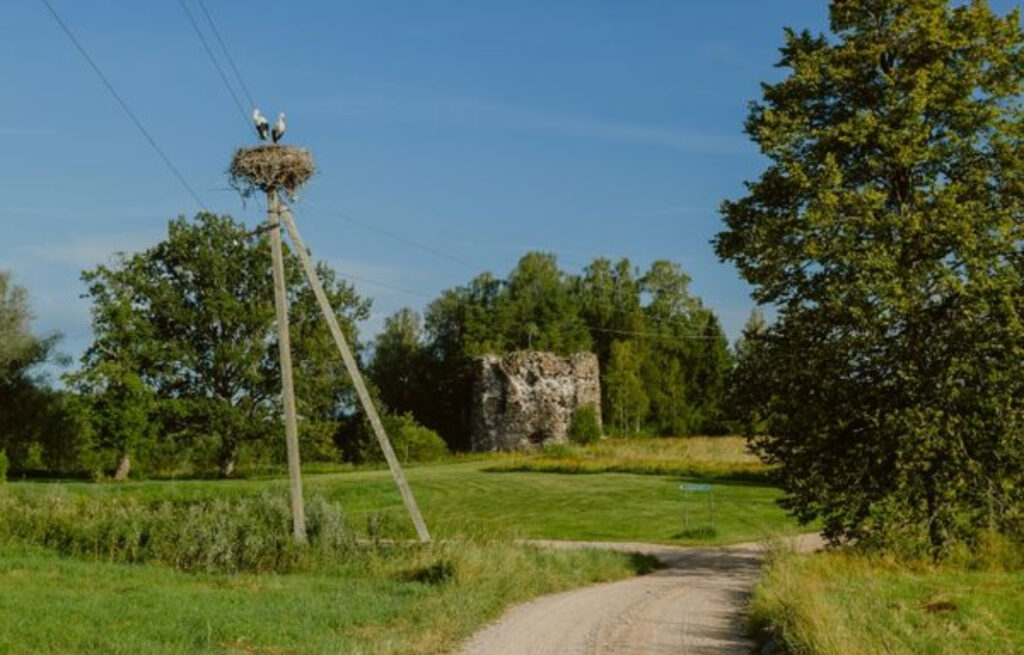
The fieldstone tower, together with the ruins of the walls and ramparts, remind us of the intense events that the mighty Rozbeku Castle experienced in the Middle Ages.
The mysterious ruins of Rozbeki Castle testify to the intense events that took place here over the centuries. Today, the castle ruins are already covered with lush trees. The rubble tower, which once housed spacious rooms, tells travellers from afar about the location of the castle ruins.
Today, the tower is cared for by the current owners, who light it with torches on Midsummer’s Eve, the summer solstice. The ruins are free to visit.
Ruins of Rozbeki Castle location
Each castle and its ruins testify to a remarkable event in the distant past, and that is so fascinating!
We hope you found this article useful and that it has helped you to plan your next trip!
